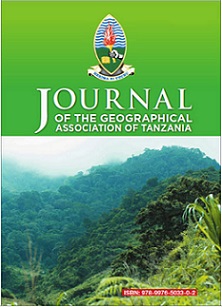Assessment of Water Management and Development Scenarios in the Great Ruaha Catchment, Rufiji Basin
Abstract
Water supplies have been declining sharply in the Great Ruaha catchment due to socio-economic development, over-abstraction, illegal use, and seasonal and inter-annual variations in climate. Despite the current pressure on water supplies, there are plans for significant agricultural expansion as a part of the Southern Agricultural Growth Corridor in Tanzania (SAGCOT), though significant uncertainty still revolves around the availability of water in the catchment. This paper aims to assess the water management and development scenarios in the catchment within the context of the current agricultural transformations. The baseline model was set up and calibrated for the Great Ruaha River (GRR) basin to simulate the existing conditions. The purpose of the baseline model was to describe the existing situation and provide a platform upon which future development intervention scenarios can be built and their impacts compared with. The model was calibrated using the observed records at Msembe gauging station and Mtera reservoir water level. The NedborAfstromnings Model (NAM) rainfall-runoff model was used to estimate the flows for sub-catchments with poor data. Five irrigation schemes were evaluated using social, environmental, and economic criteria using multi-criteria analysis techniques to assess how interventions affected the direction of change in environmental, social, and economic performance; and measure the magnitude of that change. The results indicated that the construction of the Lugoda dam, diversion canal from Ihefu wetlands, and improvement of irrigation schemes in the sub-basin are the best development and management scenarios. These will improve water availability for the expansion of the Madibira irrigation scheme; as well as ensure water availability for the Ruaha National Park (RNP), which experiences water shortage during the dry season.
Keywords: water resources modelling, scenarios, multi-criteria analysis


